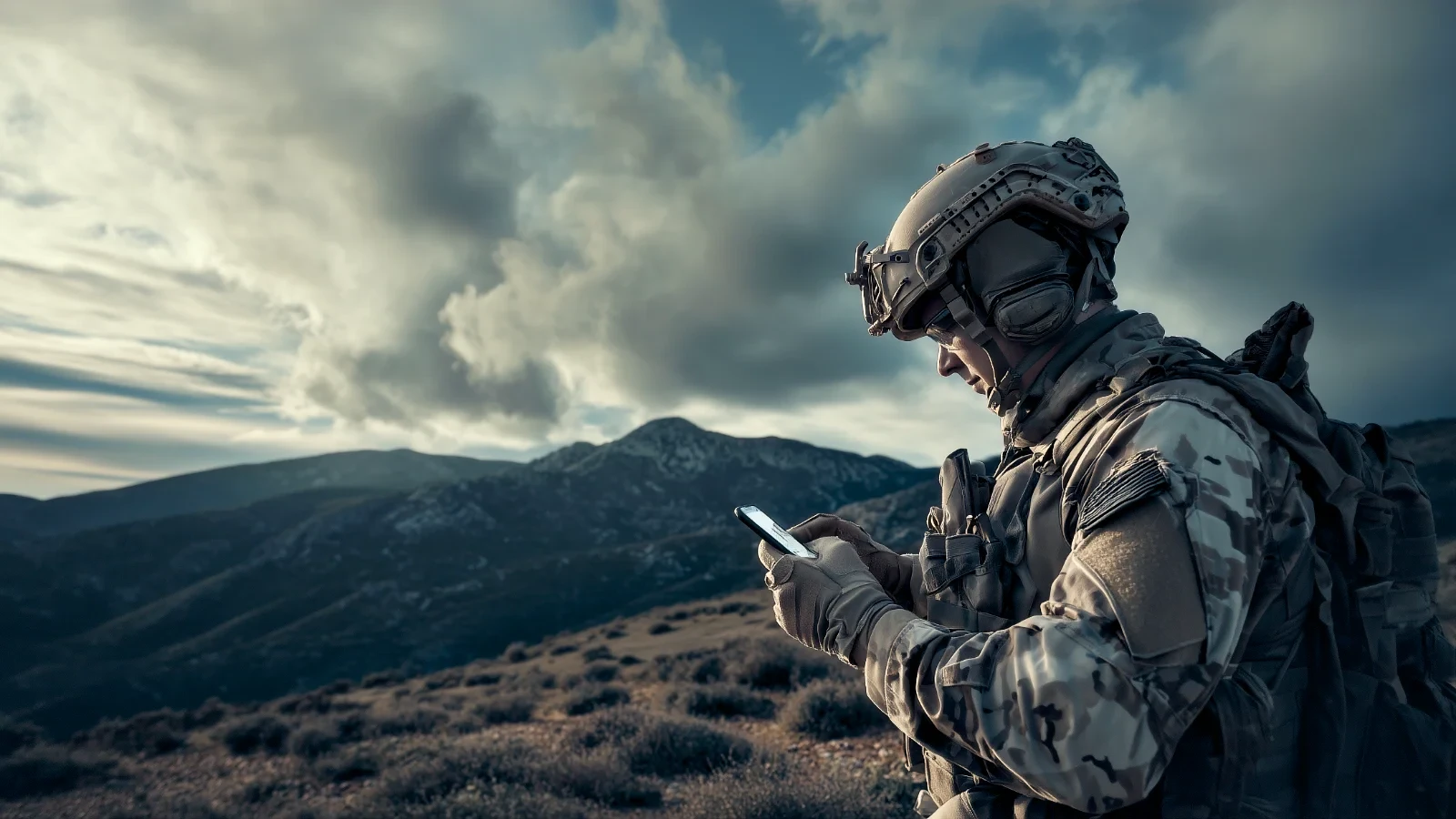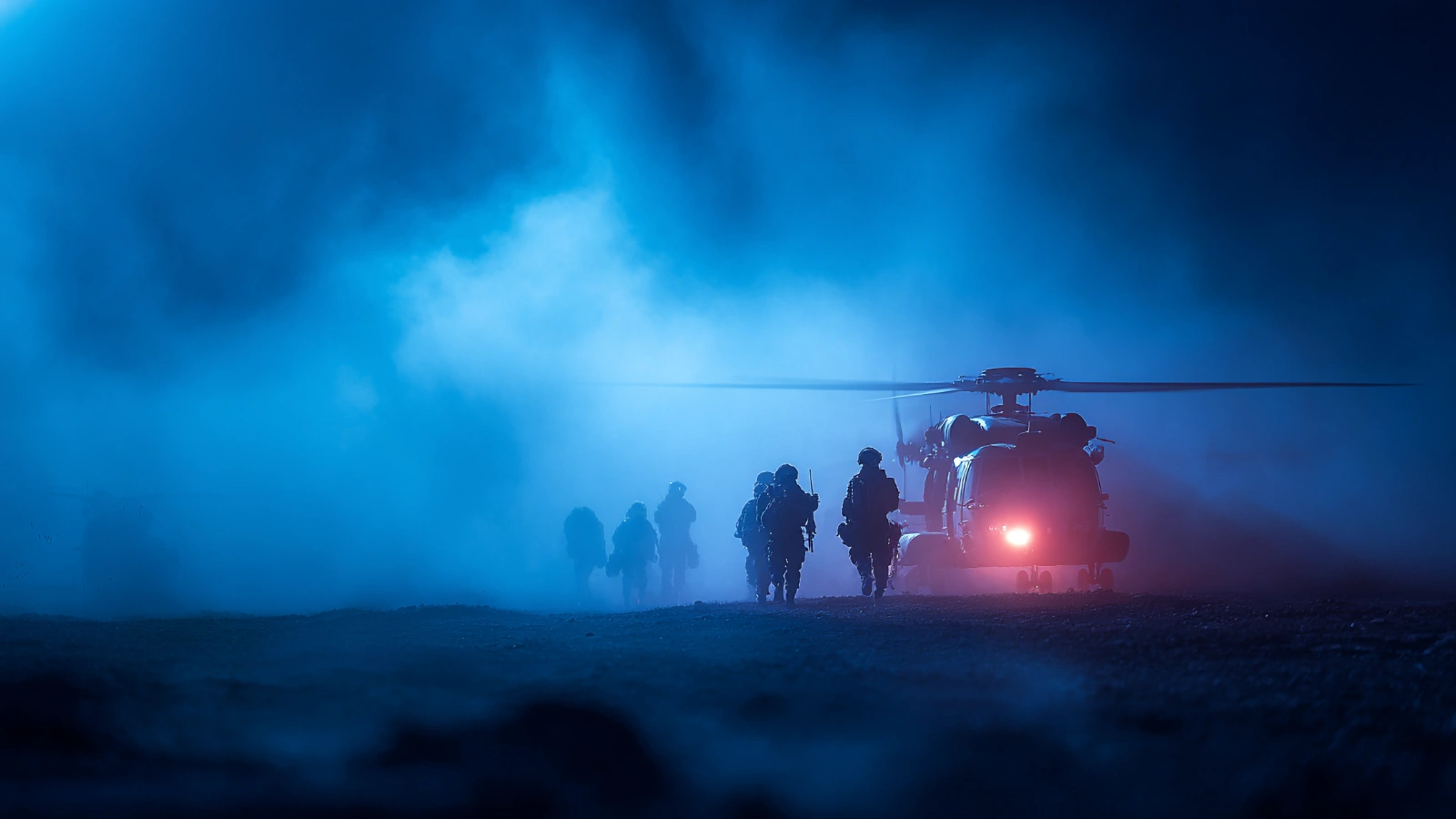When a logistics team sets up a supply point 40 kilometres from base, coordination becomes a matter of life and death. Convoys arrive with fuel, ammunition, and medical supplies. But without connectivity, the team can't track deliveries, report discrepancies, or request urgent support. This isn't a fictional scenario - it's the reality for military units operating in remote and contested environments worldwide.
The key takeaways
- There is a critical need for reliable, infrastructure-independent communication in remote and contested military operations.
- Traditional communication systems are limited by vulnerability of centralised infrastructure, heavy hardware requirements, and high logistical support demands.
- Attavik technology converts soldiers’ smartphones into mesh network nodes, creating secure, scalable, serverless networks with a 6-8 km range that operate without towers or satellites.
- Attavik’s mesh networking technology has dual-use applications beyond defense, including disaster response, remote infrastructure work, and communication support during crises.
The problem that keeps us up at night
Recent global events have starkly illustrated what happens when communication infrastructure fails or comes under attack. From the disrupted telecommunications in Gaza that prevented access to life-saving information, to military operations in remote terrain where traditional networks simply don't exist, the need for resilient, infrastructure-independent communication has never been more urgent.
Traditional military communication systems face three critical limitations:
- Liability in contested zones: Centralised infrastructure becomes a target and single point of failure. When cell towers are destroyed or satellite links are jammed, entire units can be cut off from command and each other.
- Lack of operational mobility: Heavy, complex communications hardware require is harder to move around. In fast-moving operations, this inflexibility can be tactically disastrous.
- Resource-intensive deployment: Current solutions demand significant logistical support, from power requirements to transportation, making them unsuitable for lightweight, rapid-response operations.
Our vision: communication that moves with the mission
We believe the future of tactical communication lies not in bigger towers or more satellites, but in smarter, more distributed networks. Our patented technology transforms the smartphones soldiers already carry into powerful communication hubs that create resilient mesh networks – no towers, no satellites, no central servers required.
Picture this: Lieutenant Jansen's team deploys a small Attavik mesh node and connects their smartphones. Within minutes, they have established a secure local network enabling team-to-team updates, digital checklists, and two-way coordination with their forward operating base. The system operates seamlessly in the background – low cost, low footprint, and fully independent of external infrastructure.
The technology that makes it possible
What sets Attavik apart is our fundamental approach: we've turned smartphones into both clients and servers in a self-scaling mesh network. Each device doesn't just consume the network—it becomes part of the network infrastructure itself.
Our Range Extender Devices (REDs) provide 6-8 kilometre range per unit, creating coverage areas that expand organically as more units join the network. The system is:
- Infrastructure-aware: Seamlessly integrates with existing networks when available, but operates independently when they're not.
- Plug-and-play: Deploys in minutes with minimal training required.
- Serverless by design: No central points of failure or control.
- Encrypted end-to-end: Military-grade security built into every transmission.
A decade of innovation leading to this moment
Our journey to this breakthrough has been long but purposeful:
From first concept to patent approval, we've steadily advanced toward our goal of revolutionizing tactical communications.
Starting with our first app in 2014, we've progressively solved the technical challenges of creating truly mobile, infrastructure-free networks. Key milestones include:
- 2016: Developed Wi-Fi radio technology achieving 8 km range.
- 2018: Established Attavik A/S and received our first Innobooster funding.
- 2020: Successfully tested 50MB data transmission in Greenland's challenging environment.
- 2022: Conducted field tests proving concept viability in real-world conditions.
- 2024: Completed both iOS and Android applications.
Each step has brought us closer to our vision of communication systems that truly serve the mission rather than constraining it.
Why now matters
The geopolitical landscape has fundamentally shifted. Defence spending is increasing globally, with Europe alone seeing defence communications market growth from €4B to €10B projected by 2032. Military modernization programs are actively seeking solutions that provide:
- Extreme ruggedness for harsh environments
- Rapid deployability for fast-moving operations
- Military-grade security against sophisticated threats
- Minimized size, weight, and power requirements (SWaP)
- High mobility for dynamic tactical situations
We are not just building technology – we are addressing an urgent operational need that affects real people in critical situations.
Beyond defence: dual-use impact
While our initial focus is defence applications, our technology's potential extends far beyond military use. Emergency responders dealing with natural disasters, infrastructure workers in remote locations, and civilian populations in crisis situations all face similar communication challenges.
When telecommunications infrastructure fails – whether due to natural disasters, technical failures, or deliberate attacks – our mesh networking technology can provide the communication lifeline that saves lives and enables coordinated response.




